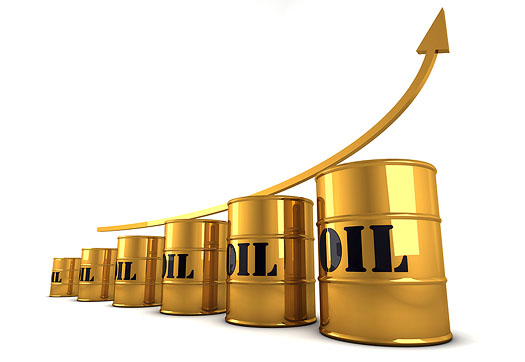On the supply side, availability of crude oil is not a pressing current issue, but the world is gradually moving away from depleting conventional and cheaper sources to unconventional sources (e.g. tight oil[1]), often offshore, in deep seas, at remote locations and armed with new technologies, like hydraulic fracking and horizontal drilling. Heavy oil, oil sand and tight oil will be used more and more. All these changes are inevitable but they are relatively more expensive and pose greater safety and environmental risks.
IEA’s ‘Resources to Reserve – Production Cost Curve’ is an excellent graphical representation to the future direction crude oil production and cost.
 In the last few years, the oil industry has seen the development of newer technologies, new investments and unconventional sources of oil as shown in the table below:
In the last few years, the oil industry has seen the development of newer technologies, new investments and unconventional sources of oil as shown in the table below:
Source: iea.org, ‘Arctic Oil and Gas in the Global Energy Picture Bo Diczfalusy Director, Tuesday 26 January 2010 IEA’, Natural Resources Canada, EIA, www.ft.com, time.com
# U.S. Geological Survey estimates that approximately 513 billion barrels of ‘technically recoverable’ oil.
 Horizontal Drilling & Hydraulic Fracking: The USA is the only country in the world that is currently using horizontal drilling and hydraulic fracking[2] in a wide scale to produce oil and gas. Shale gas and tight oil have been hailed as boons to the US economy due to increased domestic production, long-term energy security (i.e. less reliance on imported oil, especially from the Middle East), job creation and lower energy bills. US refineries are reconfiguring their plants, pipeline companies and rail operators are expanding their networks to process and transport, respectively, the domestically produced light, sweet crude oil.[3] However, controversy is also raging in the US over environmental impacts of these two technologies, especially public concerns about excessive use of water, contamination of drinking water sources, the effect on air quality, and encroachment on agricultural land and urban areas by these oil companies. A global consulting firm McKinsey (2012)[4] described horizontal fracking and hydraulic drilling as ‘disruptive innovations‘. An example of the environmental impact of such technologies is the amount of water usage. Between 4 and 19 million litres[5] (1–5 million gallons) of liquids (a mixture of water, polymers and proppants54) are required for hydraulic fracking at a single oil well with 98–99% of that water52. A lot of that water returns to the surface but ‘only a portion of such water is effectively recycled for reuse’.51
Horizontal Drilling & Hydraulic Fracking: The USA is the only country in the world that is currently using horizontal drilling and hydraulic fracking[2] in a wide scale to produce oil and gas. Shale gas and tight oil have been hailed as boons to the US economy due to increased domestic production, long-term energy security (i.e. less reliance on imported oil, especially from the Middle East), job creation and lower energy bills. US refineries are reconfiguring their plants, pipeline companies and rail operators are expanding their networks to process and transport, respectively, the domestically produced light, sweet crude oil.[3] However, controversy is also raging in the US over environmental impacts of these two technologies, especially public concerns about excessive use of water, contamination of drinking water sources, the effect on air quality, and encroachment on agricultural land and urban areas by these oil companies. A global consulting firm McKinsey (2012)[4] described horizontal fracking and hydraulic drilling as ‘disruptive innovations‘. An example of the environmental impact of such technologies is the amount of water usage. Between 4 and 19 million litres[5] (1–5 million gallons) of liquids (a mixture of water, polymers and proppants54) are required for hydraulic fracking at a single oil well with 98–99% of that water52. A lot of that water returns to the surface but ‘only a portion of such water is effectively recycled for reuse’.51
Arctic – the bold, new frontier: Sea ice is disappearing in the Arctic region and it has created new opportunities to oil and gas companies for exploration and production of these energy resources. The US National Snow and Ice Data Center[6] reported ‘Arctic sea ice extent averaged for September 2012 was 3.61 million square kilometres. This was 3.43 million square kilometres below the 1979 to 2000 average extent’.
The Arctic is remote; even in the summer temperatures can drop below zero degree Celsius, and in general the weather is very inhospitable. According to Greenpeace ‘The drilling conditions facing oil companies operating in the Arctic are some of the most challenging on Earth’. In spite of this risk, big multinational oil companies are ‘eyeing the Arctic’. ExxonMobil (USA), Eni (Italy) and Statoil (Norway) are also engaged in exploration in the Arctic.
According to Deloitte (2012),[7] Canada, Russia, Denmark, Norway and the USA currently hold jurisdiction over the region. ‘There are signs that conflict could be ahead’. For example, Norway, Russia and Canada have increased their military presence in the region.
Royal Dutch Shell has spent US$4.5 billion to obtain licences and prepare for exploratory drilling. It started preparatory drilling in the Chukchi Sea, about 145km off the Alaskan North Slope on 9 September 2012, but seven days later it abandoned plans to drill until next year because ‘one of its containment systems failed during a test’. Prior to this event, it delayed its work due to ice floe movements; Shell’s rig was moved ‘to get out of the way of one block bigger than Manhattan’.[8]
Risk of deep sea exploration: While discussing the pros and cons of drilling in the Arctic, it would be good to look at the consequences of the Deepwater Horizon oil spill. It started on 20 April 2010 and continued for three months. According Pipeline and Gas Journal[9] (May 2012), it ‘was unlike any other spill encountered previously. Although the well blowout occurred at unprecedented depths (the rig could operate in waters up to 2,400 m deep and drill down to 9,100 m) and released enormous quantities of oil (an estimated 4.9 million barrels). The spill caused extensive damage to marine and wildlife habitats and to the Gulf’s fishing and tourism industries. This cost of this oil spill response was US$3.8 billion in 2011 according to BP’s annual report. ‘BP has agreed to pay a record $4.36 billion in fines for the 2010 Gulf of Mexico oil spill and will plead guilty to obstruction and criminal negligence in the deaths of 11 workers. BP is also still on the hook for economic damages, including the cost of environmental rehabilitation, and could pay as much as $US18 billion in civil penalties’.[10]
Tension in the South China Sea: The South China Sea is another untapped location regarding oil and gas and the whole area is heating up over sovereignty of the region. The estimate for oil reserves varies between 28 billion barrels (by US scientists) and 200 billion barrels (by some Chinese analysts). China is also embroiled in territorial disputes with Philippines, Brunei, Malaysia, Vietnam and Taiwan. China also has a dispute with Japan in the East China Sea over a group of islands. Other countries also have competing sovereignty claims over this area. Chinese naval vessels patrol the disputed region and USA fleets are operating in the East and South China Sea. According to the Council on Foreign Relations (April 2012), [11] ‘The risk of conflict in the South China Sea is significant’. It also raises concerns about freedom of navigation in the region. It recommends joint development of petroleum resources in order to reduce tension between China and Vietnam and between China and the Philippines.
Africa’s oil rush: A new frontier in oil exploration and production is being opened in Africa. According to the BP’s Statistical Review of World Energy June 2012, Africa had proved reserves of 132.4 billion barrels at the end of 2011, equivalent to 41.2 years of current production and 8% of the world’s reserves.
Between 1980 and 1991, Africa’s proved reserve increased by only 7.1 billion barrels, but between 1991 and 2001 it increased by 36.4 billion barrels, and in the last 10 years 35.6 billion barrels.
Source: UNBConnect










